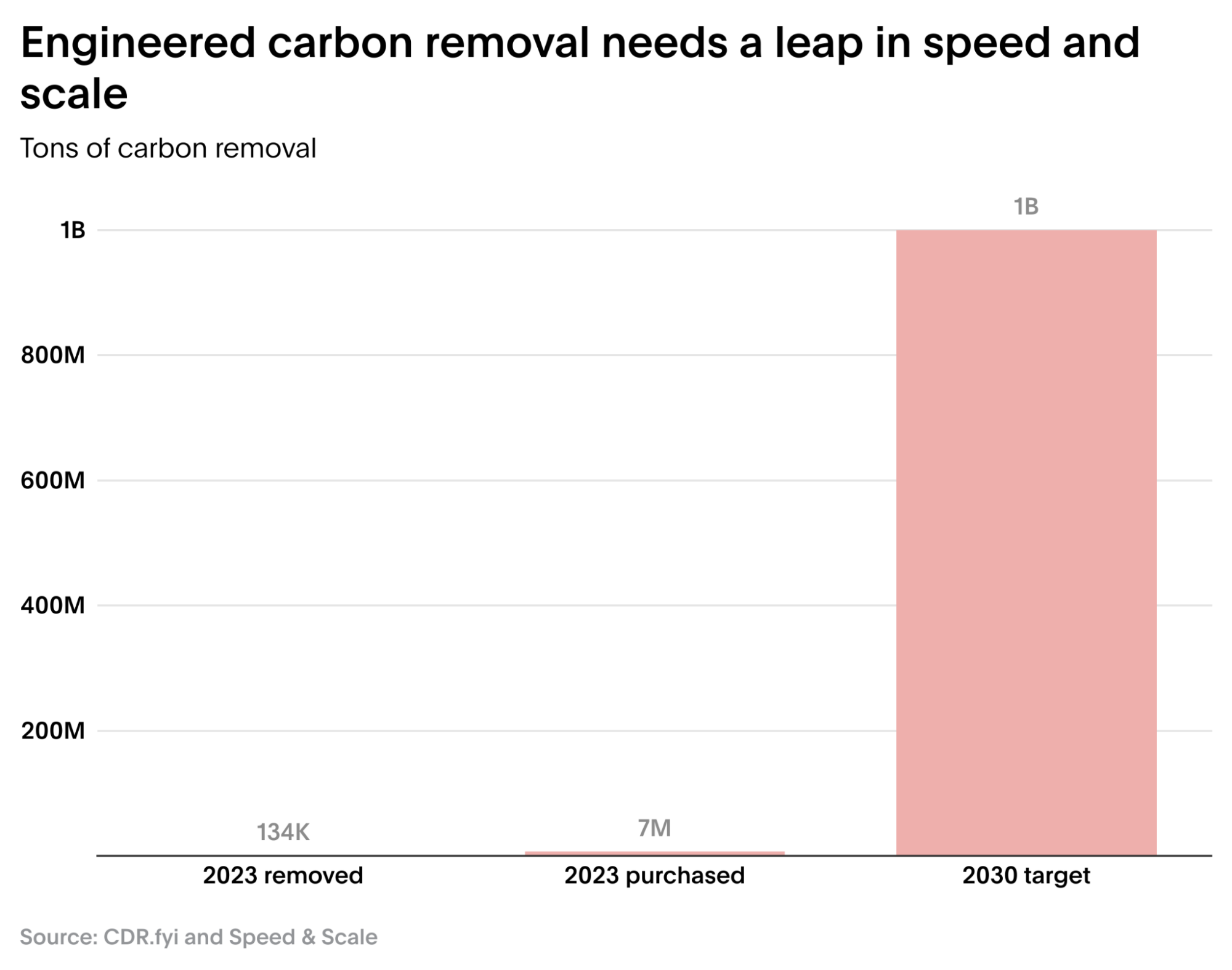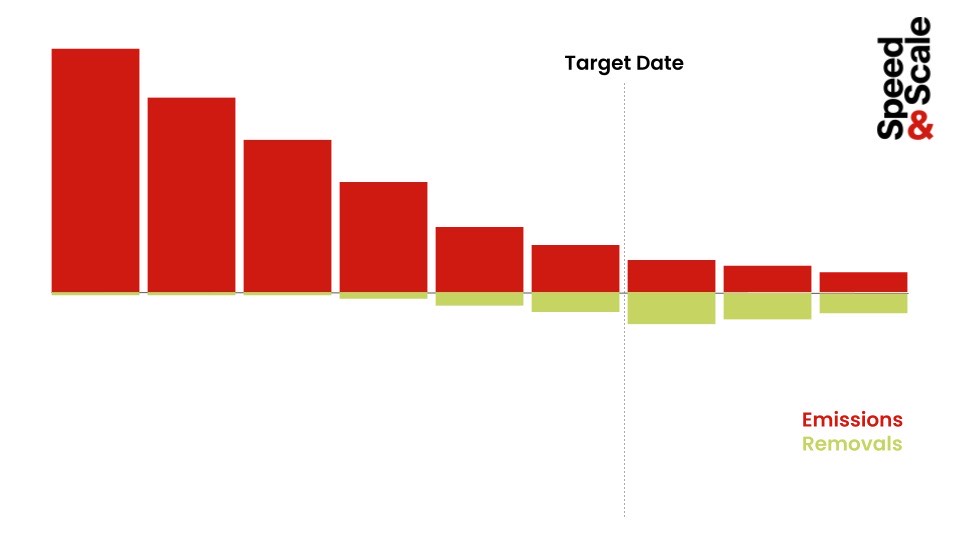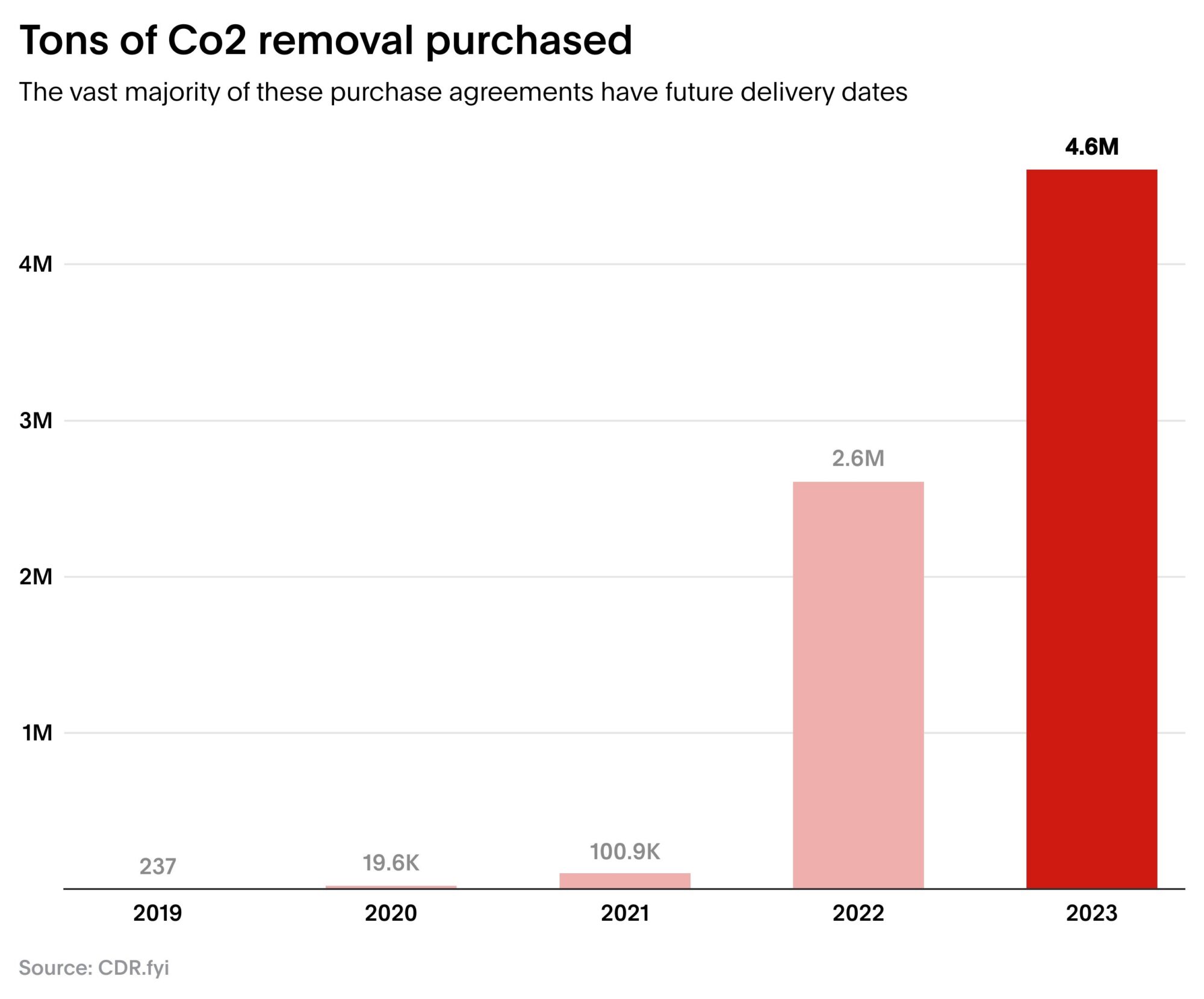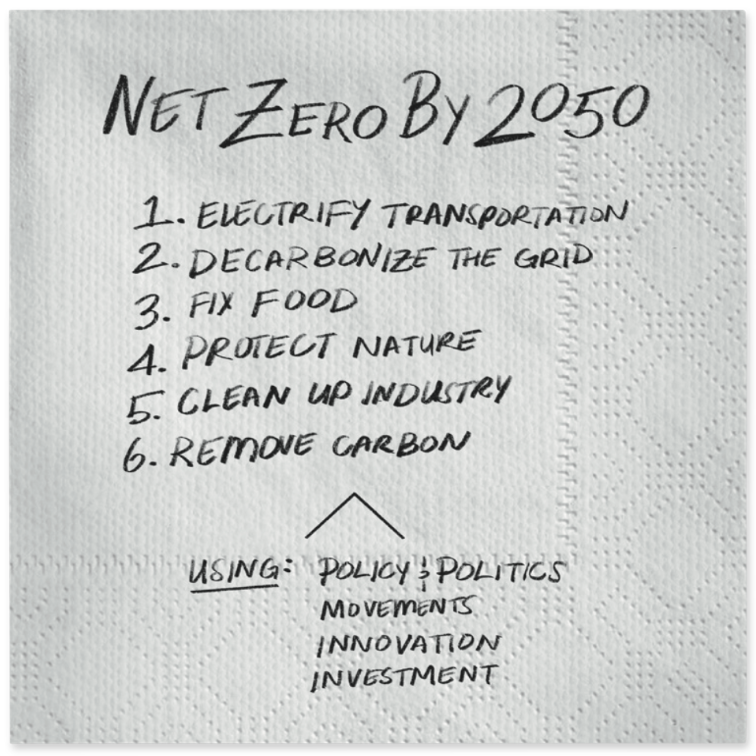The United Nations Intergovernmental Panel on Climate Change (IPCC) has set a clear goal: to limit global warming to 1.5° Celsius by reaching net zero greenhouse gas emissions by 2050. To help the world reach this target, companies must first significantly cut their own emissions. But even after everyone does their utmost to make these cuts, the IPCC predicts that we’ll still have from five to sixteen gigatons of leftover global emissions each year. To bridge this gap, the world will need carbon removal at scale.
Putting it mildly, we have a long way to go, both for nature-based approaches and engineered carbon removal. The Speed & Scale plan’s target for engineered carbon removal is one gigaton of CO2–one billion tons–per year by 2030, then three billion tons by 2040 and five billion tons by 2050. To date, according to announced purchasing agreements tracked by CDR.fyi, barely seventy thousand tons of carbon removal have been delivered. If we do the math, all carbon removal to date amounts to less than one-hundredth of one percent of our annual goal. To help jumpstart the carbon removal industry, corporations need to make early purchasing commitments—now. And they’ll need clear guidance from corporate standard-setters on how much carbon removal to purchase today.

Cut. Conserve. Remove.
Leading-edge corporations should do the following: 1) cut emissions as much and as fast as they can; 2) use energy and materials more efficiently; and 3) catalyze carbon removal today by purchasing small amounts (perhaps 0.1 percent of their carbon footprint). We need to pay now for what we’ll need down the road.

This strategy asks companies to focus on directly cutting emissions–before they enter the atmosphere–as their top priority. How can they achieve this? By procuring clean energy, electrifying vehicle fleets, and investing in energy efficiency. From a net zero standpoint, these actions represent the most powerful use of corporate climate action dollars.
What about offsets? Companies can purchase offsets that protect nature, support restoration efforts, and fund renewable energy in the globe’s emerging economies. But while these investments can be good for the planet, they can’t be relied upon to negate a company’s leftover emissions.
Only durable carbon removal, which removes emissions more or less permanently from the atmosphere, can get companies to net zero. And so the question becomes: How much carbon removal should a company buy today to ensure there will be enough supply for them to rely on in the future?
Guidance on Amount
Markets aren’t created overnight. For 5 billion tons of engineered carbon removal to be available by 2050, a new market must be catalyzed now.
Even seemingly small purchases could meaningfully accelerate the industry. If all of the companies in the U.S. Fortune 500 were to purchase carbon removal for just 0.1 percent of their reported emissions, it would amount to a total annual investment of $8 billion in removal innovation.
Advance purchasing matters. In industries ranging from solar to batteries, early demand has turbocharged innovation. Startups raise funds from investors far more easily when orders are already queued up. Over time, as production expands, companies learn by doing. They work out the kinks in new technologies. Wright’s Law kicks in and prices fall.
Purchasing coalitions can spur collective action. The First Movers Coalition serves as a knowledge-sharing forum, aggregates demand, and adds a public relations benefit for participants. Another group, Frontier, is more tightly coordinated. It has pooled a purchasing fund of more than $1 billion to conduct transactions and coordinate carbon removal innovations and technology development.
A number of companies are already taking the lead. Top purchasers of carbon removal include Microsoft, JPMorgan Chase, Airbus, Shopify, and SwissRe.

Guidance on Durability
Today, companies lack guidance on what type of carbon removal they should plan to buy. To help companies plan appropriately, standard-setters should specify today which types of carbon removal will meet the bar for a net zero claim in 2050.
The most critical element of carbon removal is durability, or how long the carbon stays out of the atmosphere. The benefit of planting trees, for one example, can be short-lived. When trees die, their carbon is re-released into the atmosphere and the removal is rendered useless. Truly durable removal lasts for thousands of years.
Standard-setters need to set a durability bar for the carbon removal options the world will need in 2050. They should be clear about what will count and what won’t.
Clear Direction Needed
We hope that corporate standards-setters will give clear direction on the right amount and kinds of carbon removal to purchase today. This will allow companies to make catalytic investments to help the technology scale. Ultimately, it will help companies meet the climate goals they have set for 2030 and beyond. We need to end the removal guessing game; by providing corporations with clear guidance. Our planet depends on it.












